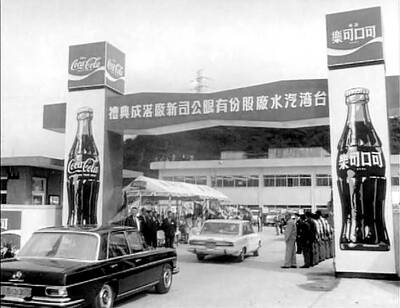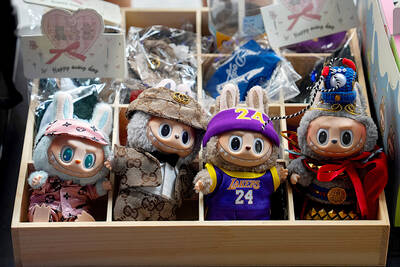Off the coast of Malta, bobbing in the Mediterranean waters, a flotilla of fishing boats is waiting to net swarms of bluefin tuna before the catching season ends last this month.
The tuna aren’t the only ones being hunted.
Environmental campaigners are waiting too, their binoculars and monitoring devices trained not on the sea but on the trawlers.
“Actually, I want them to start fishing,” said Oliver Knowles, a campaigner for Greenpeace, which wants a moratorium on bluefin tuna fishing and has sent two ships to the Mediterranean to try to disrupt the hunt.
“You want a little environmental destruction, so you get to say something about it,” he told his young crew of 26 on board the organization’s flagship Rainbow Warrior.
“There’s a perversity about being a campaigner — you have to hope for some bad news. I don’t want them
to fish.
“But actually, unless we raise the political temperature on this, and get them to stop, they can come back year after year after year.”
At any one time there are a dozen or more vessels in an area large enough for them to remain out of sight of each other. From France, Spain, Turkey and elsewhere. Some barely move, others shift constantly.
Big in Japan
Many of the boats carry net cages used to encircle the tuna swarms, which are then towed offshore to be fattened and shipped in giant freezer ships to Japan, where it is a mainstay of sushi and sashimi.
The larger and fatter, the more valuable they are — the biggest specimens can fetch more than US$100,000 at the Tsukiji fish market in Tokyo.
Industrial-scale fishing and harvesting on the high seas has caused stocks to plunge by up to 80 percent in the Mediterranean and eastern Atlantic, where they come to spawn in the warmer waters.
Earlier this year the EU and the US attempted to ban the trade of the species, but Japan lobbied successfully and the proposal was defeated.
The focus has now returned to the open waters until the tuna season ends on June 15, and Greenpeace flew reporters by helicopter onto the Rainbow Warrior to follow its side of the chase.
Leaning over nautical maps and compasses, Knowles and his crew monitor the trawlers, looking for signs they might have found a swarm.
“If they start circling or their speed slows down,” he said, “it’s usually an indication that they at least think they’ve got a shoal of fish.”
That’s the point when the Greenpeace activists want to step in to disrupt any fishing to “stop them taking the fish out of the water,” said Knowles.
Greenpeace refuses to divulge what kind of tactics it might employ. Last month, activists on board rafts temporarily blocked three tuna fishing vessels from leaving the port of Sete, in southern France.
Waiting for action
There is little time left. The wrangling over a ban piled further pressure on the International Commission for the Conservation of Atlantic Tunas (ICCAT) to shorten the fishing season to four weeks this year and shrink the quota of bluefin tuna that can be caught from 19,500 tonnes to 13,500 tonnes in 2010.
“Most scientists thought the quotas were higher than they should be,” said Audun Lem, a fishery trade expert at the Food and Agriculture Organization.
Italy went further and imposed a moratorium on industrial fishing of tuna this year, paying its fishermen and companies US$12.3 million to keep their boats at harbor.
The 49-strong tuna fleet, now being reduced to nine, “was subsidized to be built. It is now subsidized to stay at home. And it will be subsidized to be destroyed,” said Francois Chartier, a campaigner on board the Arctic Sunrise, the other Greenpeace vessel in the Mediterranean. “It is a total aberration.”
If everyone respected their quota, “we should have an improvement” in the situation, said Massimo Spagnolo, who heads a research institute close to the fishing industry.
Spagnolo, who says quotas are not a good idea because they encourage early and intensive fishing before
the tuna can spawn, believes ICCAT has overstated the danger facing
the species.
“If you go to the Tirrenian Sea there is a lot of tuna,” he said, referring to waters off Italy’s west coast.
South of Malta, however, it’s apparently not warm enough yet to draw tuna. The Rainbow Warrior has been at sea for more than a week but hasn’t been able to disrupt any fishing.
“There’s a good selection of vessels all around us,” Knowles said. “We’ll just have to keep watching. We just have to be patient.”

July 28 to Aug. 3 Former president Chiang Kai-shek (蔣介石) reportedly maintained a simple diet and preferred to drink warm water — but one indulgence he enjoyed was a banned drink: Coca-Cola. Although a Coca-Cola plant was built in Taiwan in 1957, It was only allowed to sell to the US military and other American agencies. However, Chiang’s aides recall procuring the soft drink at US military exchange stores, and there’s also records of the Presidential Office ordering in bulk from Hong Kong. By the 1960s, it wasn’t difficult for those with means or connections to obtain Coca-Cola from the

No one saw it coming. Everyone — including the Chinese Nationalist Party (KMT) — expected at least some of the recall campaigns against 24 of its lawmakers and Hsinchu Mayor Ann Kao (高虹安) to succeed. Underground gamblers reportedly expected between five and eight lawmakers to lose their jobs. All of this analysis made sense, but contained a fatal flaw. The record of the recall campaigns, the collapse of the KMT-led recalls, and polling data all pointed to enthusiastic high turnout in support of the recall campaigns, and that those against the recalls were unenthusiastic and far less likely to vote. That

A couple of weeks ago the parties aligned with the People’s Republic of China (PRC), the Chinese Nationalist Party (KMT) and the Taiwan People’s Party (TPP), voted in the legislature to eliminate the subsidy that enables Taiwan Power Co (Taipower) to keep up with its burgeoning debt, and instead pay for universal cash handouts worth NT$10,000. The subsidy would have been NT$100 billion, while the cash handout had a budget of NT$235 billion. The bill mandates that the cash payments must be completed by Oct. 31 of this year. The changes were part of the overall NT$545 billion budget approved

Trolleys piled high with decapitated silicon monster heads, tattooed dealers lurking in alleyways, bin bags of contraband hidden behind shop counters: welcome to the world of Lafufus. Fake Labubus (拉布布), also known as Lafufus, are flooding the hidden market. As demand for the collectable furry keyrings soars, entrepreneurs in the southern trading hub of Shenzhen are wasting no time sourcing imitation versions to sell to eager Labubu hunters. But the Chinese authorities, keen to protect a rare soft-power success story, are cracking down on the counterfeits. “Labubus have become very sensitive,” says one unofficial vendor, in her small, unmarked, fake designer goods